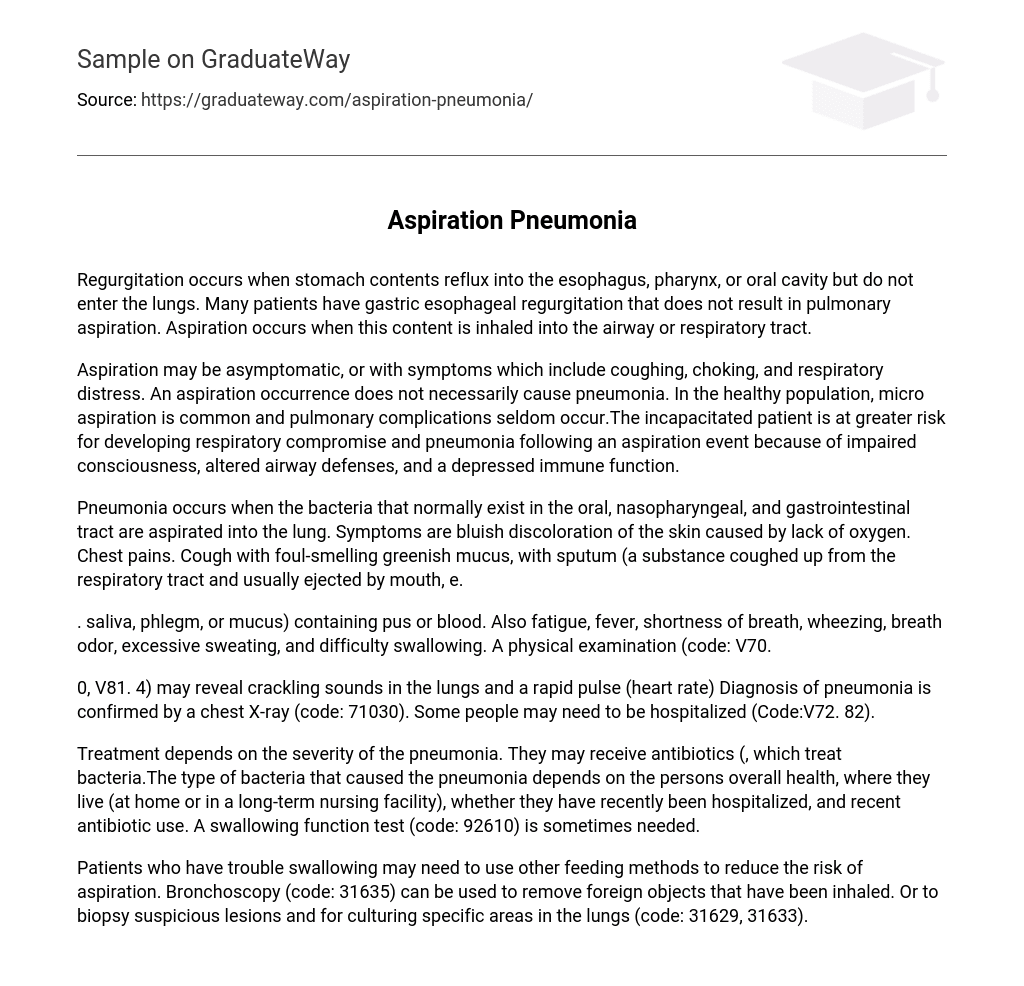Regurgitation occurs when stomach contents reflux into the esophagus, pharynx, or oral cavity but do not enter the lungs. Many patients have gastric esophageal regurgitation that does not result in pulmonary aspiration. Aspiration occurs when this content is inhaled into the airway or respiratory tract.
Aspiration may be asymptomatic, or with symptoms which include coughing, choking, and respiratory distress. An aspiration occurrence does not necessarily cause pneumonia. In the healthy population, micro aspiration is common and pulmonary complications seldom occur. The incapacitated patient is at greater risk for developing respiratory compromise and pneumonia following an aspiration event because of impaired consciousness, altered airway defenses, and a depressed immune function.
Pneumonia occurs when the bacteria that normally exist in the oral, nasopharyngeal, and gastrointestinal tract are aspirated into the lung. Symptoms are bluish discoloration of the skin caused by lack of oxygen. Chest pains. Cough with foul-smelling greenish mucus, with sputum (a substance coughed up from the respiratory tract and usually ejected by mouth, e. . saliva, phlegm, or mucus) containing pus or blood. Also fatigue, fever, shortness of breath, wheezing, breath odor, excessive sweating, and difficulty swallowing. A physical examination (code: V70. 0, V81. 4) may reveal crackling sounds in the lungs and a rapid pulse (heart rate) Diagnosis of pneumonia is confirmed by a chest X-ray (code: 71030). Some people may need to be hospitalized (Code:V72. 82).
Treatment depends on the severity of the pneumonia. They may receive antibiotics (, which treat bacteria.The type of bacteria that caused the pneumonia depends on the persons overall health, where they live (at home or in a long-term nursing facility), whether they have recently been hospitalized, and recent antibiotic use. A swallowing function test (code: 92610) is sometimes needed.
Patients who have trouble swallowing may need to use other feeding methods to reduce the risk of aspiration. Bronchoscopy (code: 31635) can be used to remove foreign objects that have been inhaled. Or to biopsy suspicious lesions and for culturing specific areas in the lungs (code: 31629, 31633).





